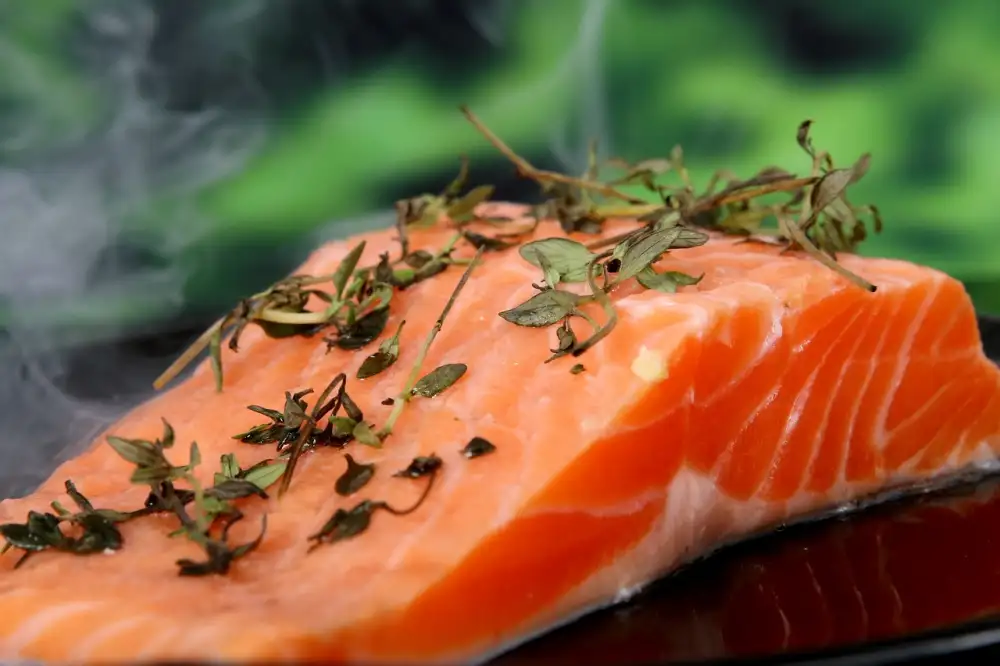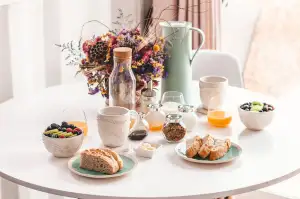Master the Art of Cooking Salmon: A Step-by-Step Guide to Prepare the Perfect Dish

Salmon, with its delicate flavor and flaky texture, is a versatile and popular fish that can be prepared in countless ways. Whether you're a seasoned chef or a novice in the kitchen, mastering the art of cooking salmon is sure to impress your family and friends. In this step-by-step guide, we will explore the techniques and tips to help you prepare the perfect dish every time. So let's dive into the world of salmon and unlock its culinary magic!
Selecting the freshest salmon
Selecting the freshest salmon is crucial to ensure a delicious and flavorful dish. When choosing salmon, look for firm flesh that springs back when touched. The color should be vibrant, ranging from pink to deep red depending on the variety. Avoid any fish with a strong fishy odor or dull, discolored flesh. If possible, buy salmon from a reputable fishmonger who can guarantee its freshness. Remember, fresh salmon will always yield the best results in your cooking endeavors.
Preparing the salmon for cooking
Preparing the salmon for cooking is a crucial step in ensuring a delicious and perfectly cooked dish. Start by rinsing the salmon fillets under cold water to remove any impurities. Pat them dry with paper towels to ensure a crispy exterior. Next, check for any remaining bones and use tweezers to carefully remove them. If desired, you can also remove the skin by gently sliding a sharp knife between the skin and flesh. Finally, cut the fillets into portions of your desired size, ensuring even thickness for consistent cooking. With the salmon properly prepared, you're now ready to move on to choosing the right cooking method.
Choosing the right cooking method
Choosing the right cooking method is crucial to ensure that your salmon turns out perfectly cooked and delicious. There are several options to consider, each offering a unique flavor and texture. Grilling is a popular choice as it imparts a smoky flavor and creates beautiful grill marks on the salmon. Baking is another great option, allowing for even cooking and the opportunity to infuse flavors by adding herbs or citrus slices. Pan-searing is perfect for those who prefer a crispy skin and tender flesh. Poaching in broth or wine results in a delicate, moist texture. Whichever method you choose, make sure to adjust the cooking time based on the thickness of your salmon fillet to avoid overcooking.
Seasoning and marinating the salmon
Seasoning and marinating the salmon is an essential step to enhance its flavor and add depth to the dish. Before seasoning, pat the salmon dry with a paper towel to ensure that the flavors adhere well. A simple yet delicious seasoning can be a combination of salt, pepper, and lemon zest. Alternatively, you can experiment with different herbs and spices like dill, thyme, garlic powder, or paprika to create your own unique flavor profile.
Marinating the salmon is another great way to infuse it with additional flavors. You can use a mixture of olive oil, lemon juice, soy sauce, and minced garlic for a tangy and savory marinade. Let the salmon marinate in the refrigerator for at least 30 minutes or up to overnight for maximum flavor penetration.
Remember not to overdo the seasoning or marinating process as it may overpower the natural taste of the salmon. The goal is to enhance its delicate flavor rather than mask it completely. With proper seasoning and marination, you can elevate your salmon dish from ordinary to extraordinary.
Cooking the salmon to perfection
Cooking the salmon to perfection requires careful attention to detail and precise timing. Overcooking can result in dry, flavorless fish, while undercooking can leave it raw and potentially unsafe to eat. Here are some key steps to ensure your salmon is cooked just right:
1. Preheat your oven or grill to the recommended temperature. This will help cook the salmon evenly and prevent it from drying out.
2. Place the salmon on a greased baking sheet or grill grates, skin-side down. This will allow the fish to cook evenly and prevent it from sticking.
3. Cook the salmon for about 10 minutes per inch of thickness, flipping halfway through if desired. The internal temperature should reach 145°F (63°C) for optimal doneness.
4. Keep an eye on the salmon as it cooks, checking for any signs of overcooking such as white protein oozing out from between the flakes. Remove it from heat immediately if this occurs.
5. To test for doneness, gently insert a fork into the thickest part of the fish and twist slightly. If it flakes easily and appears opaque throughout, it is ready to be served.
Remember that cooking times may vary depending on the size and thickness of your salmon fillet or steak. It's always better to slightly undercook than overcook, as you can always return it briefly to heat if needed.
By following these steps, you'll be able to achieve perfectly cooked salmon with a moist and tender texture that melts in your mouth.
Serving and garnishing the cooked salmon
Serving and garnishing the cooked salmon is just as important as the cooking process itself. After all, presentation is key when it comes to creating a memorable dining experience. Once your salmon is perfectly cooked, carefully transfer it onto a serving platter. To enhance its visual appeal, you can garnish the dish with fresh herbs such as dill or parsley. These herbs not only add a pop of color but also complement the flavors of the salmon. For an extra touch of elegance, you can squeeze some lemon juice over the fish or place lemon slices on top. This will not only enhance the taste but also provide a refreshing citrus aroma. Remember to serve your salmon immediately to ensure it remains warm and moist. With these simple garnishing techniques, you can elevate your cooked salmon from ordinary to extraordinary.
Tips for storing leftover salmon
Tips for Storing Leftover Salmon:
1. Refrigerate promptly: After cooking, allow the leftover salmon to cool down to room temperature. Then, wrap it tightly in plastic wrap or place it in an airtight container before refrigerating.
2. Use within 2 days: Leftover salmon should be consumed within 2 days to ensure its freshness and flavor. Beyond that, it may start to lose its taste and texture.
3. Reheat with care: When reheating leftover salmon, avoid using high heat as it can dry out the fish. Instead, gently warm it in a skillet over low heat or in the oven at a low temperature until heated through.
4. Transform into new dishes: Leftover salmon can be transformed into delicious new dishes such as salads, pasta dishes, or sandwiches. Simply flake the salmon and incorporate it into your favorite recipes for a quick and tasty meal.
5. Freeze for later use: If you don't plan on consuming the leftover salmon within 2 days, consider freezing it for future use. Wrap it tightly in plastic wrap and place it in a freezer-safe bag or container. It can be stored in the freezer for up to 3 months.
By following these tips, you can make the most of your leftover salmon and enjoy its flavors even after its initial preparation.
Exploring different salmon recipes
Exploring different salmon recipes opens up a world of culinary possibilities. From classic dishes like grilled salmon with lemon and dill to more adventurous options like teriyaki glazed salmon or spicy Cajun blackened salmon, there is a recipe to suit every palate. For those looking for a lighter option, try poached salmon with a refreshing cucumber and yogurt sauce. Smoked salmon can be used in salads, pasta dishes, or even as a topping for pizza. The versatility of salmon allows you to experiment with flavors and ingredients, ensuring that each dish is unique and delicious. So go ahead and explore the endless possibilities of cooking with salmon!
In conclusion, mastering the art of cooking salmon is a journey that requires practice and attention to detail. By selecting the freshest salmon, preparing it properly, choosing the right cooking method, and seasoning it to perfection, you can create a dish that is both delicious and visually appealing. Remember to serve your cooked salmon with complementary garnishes and experiment with different recipes to explore the versatility of this incredible fish. With time and experience, you will become a true master in the kitchen, impressing your guests with your perfectly cooked salmon creations. So go ahead, dive into the world of salmon cooking and unlock your culinary potential!
Published: 17. 11. 2023
Category: Food



